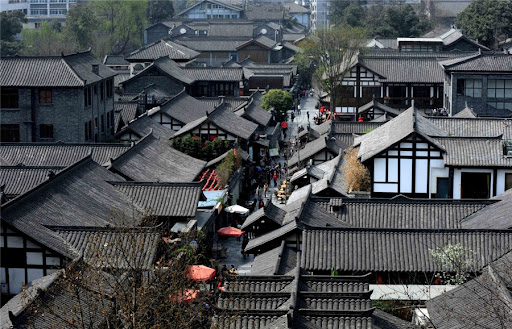
Chengdu, this charming "Land of Abundance", shines like a brilliant pearl set in the southwestern landscape.
2024/12/04
Chengdu (成都), this charming "Land of Abundance", shines like a brilliant pearl set in the southwestern landscape. With its unique cultural heritage, delectable cuisine, and rich tourism resources, it attracts countless visitors from near and far.
Documents: Bring your ID card and any other necessary documents (such as student ID, senior citizen card, etc. for discounts at scenic spots).
Clothing: Chengdu has a humid climate with hot and rainy summers, so lightweight and breathable clothing is essential; a long-sleeve jacket is advisable for the pleasant spring and autumn; in winter, be prepared with thick cotton clothes and down jackets, and don’t forget an umbrella.
Medications: Bring digestive medicines, such as digestive tablets or berberine, to combat the "challenges" of spicy food; cold and anti-inflammatory medications to prevent discomfort caused by the variable weather; and mosquito repellent, which is essential for summer travel.
Items: Comfortable sneakers for strolling through the streets; sunscreen products (sunscreen, sunglasses, sun hats) to protect your skin from the strong sun; a camera or smartphone to capture wonderful moments; and a power bank to ensure your devices stay charged during your travels.
Shuangliu Airport (双流机场) is close to the city center, has numerous flights, and offers convenient transportation, with options like airport shuttle buses, subways, and taxis, making it the preferred choice for most travelers. While Tianfu Airport (天府机场) has new facilities, its distance from the city center means that if you choose to land there, it’s advisable to book an airport express or rideshare in advance to ensure a smooth journey.
Subway: The subway network is extensive, covering major attractions such as Wuhou Shrine (武侯祠), Kuanzhai Alley (宽窄巷子), and Chunxi Road (春熙路). Ticket purchasing is convenient, supporting cash and QR code payments. You can also get a metro card for discounts.
Bus: The bus system is extensive, with some lines serving as sightseeing routes that offer picturesque views along the way. Mobile payments are accepted, and some routes allow usage of bus cards for discounts.
Taxis / Rideshare: Convenient travel options are available, but be prepared for possible traffic jams during peak hours or in remote areas. You can discuss the best route with the driver based on your itinerary. Rideshare prices are transparent, with various platforms available for your choice.

Wuhou Shrine (武侯祠): A sacred site commemorating the heroes of the Shu Han dynasty, featuring red walls and traditional black tiles surrounded by ancient cypress trees. With rich historical and cultural significance, tickets are affordable and the visit takes about 2-3 hours. The nearby cultural products make it an excellent spot for souvenir shopping.
Jinli Ancient Street (锦里古街): Adjacent to Wuhou Shrine, this historical cultural street of Western Sichuan illuminates at night with red lanterns. Traditional architecture intertwines with specialty snacks and handicraft shops. Performances of Sichuan opera and folk art add to the vibrant atmosphere, allowing visitors to enjoy scenic views while tasting delicious foods. Plan to spend around 2-3 hours here to fully immerse in the ancient Shu charm.
Kuanzhai Alley (宽窄巷子): Comprising Wide Alley, Narrow Alley, and Jing Alley, this area features a mixture of traditional Qing-style courtyard houses and modern shops. Strolling through, visitors can enjoy traditional Sichuan tea and local snacks, providing a leisurely experience of the slow-paced life in old Chengdu. Plan for 3-4 hours of exploration, as the atmosphere varies between morning and evening, allowing for different experiences at different times.